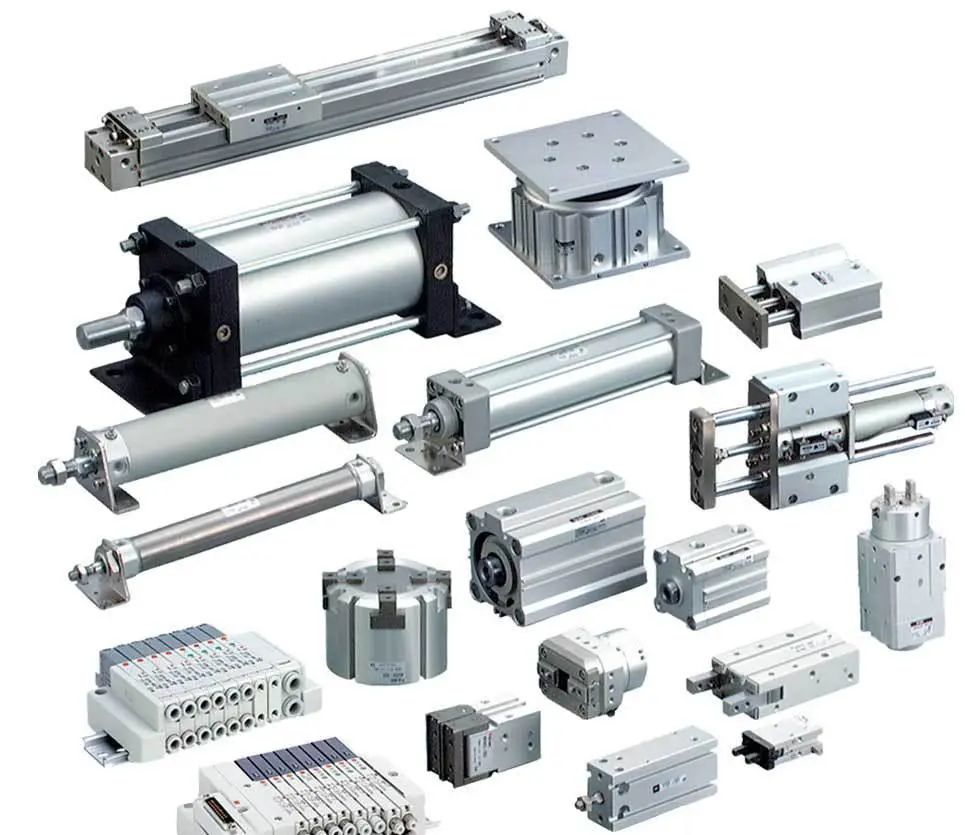1. Type selection
According to the working requirements and conditions, correctly select the type of cylinder. If the cylinder is required to reach the end of the stroke without impact and impact noise, a buffer cylinder should be selected; if it is required to be light in weight, a light cylinder should be selected; if it is required to have a narrow installation space and a short stroke, a thin cylinder can be selected; if there is a lateral load, a cylinder with a guide rod can be selected; If the braking precision is high, a locking cylinder should be selected; if the piston rod is not allowed to rotate, a cylinder with a non-rotating function of the rod can be selected; in a high temperature environment, a heat-resistant cylinder should be selected; in a corrosive environment, a corrosion-resistant cylinder should be selected. In harsh environments such as dust, it is necessary to install a dust cover on the protruding end of the piston rod. When no pollution is required, it is necessary to choose oil-free or oil-free lubricated cylinders, etc.
2. Installation form
It depends on factors such as installation location and purpose of use. In general, a fixed cylinder is used. When it is necessary to rotate continuously with the working mechanism (such as lathes, grinders, etc.), a rotary cylinder should be selected. When the piston rod is required to perform arc swing in addition to linear motion, the pivot pin cylinder is selected. When there are special requirements, the corresponding special cylinder should be selected. The public account "Mechanical Engineering Literature", a gas station for engineers!
3. The size of the force
That is, the choice of bore diameter. Determine the thrust and pulling force output by the cylinder according to the load force. Generally, the force of the cylinder required by the theoretical balance condition of the external load is used, and different load rates are selected according to different speeds, so that the output force of the cylinder has a slight margin. If the cylinder diameter is too small, the output force is not enough, but if the cylinder diameter is too large, the equipment will be bulky, the cost will increase, and the air consumption will be increased, which will waste energy. In the design of the fixture, the expansion mechanism should be used as much as possible to reduce the overall size of the cylinder.
4. Piston stroke
It is related to the occasion of use and the stroke of the mechanism, but generally the full stroke is not selected to prevent the piston from colliding with the cylinder head. If it is used for clamping mechanism, etc., a margin of 10-20mm should be added according to the stroke required for calculation.
5. The movement speed of the piston
It mainly depends on the input compressed air flow rate of the cylinder, the size of the intake and exhaust ports of the cylinder and the inner diameter of the conduit. It is required to take a large value for high-speed movement. The cylinder movement speed is generally 50-800mm/s. For high-speed motion cylinders, an intake pipe with a large inner diameter should be selected; for load changes, in order to obtain a slow and stable motion speed, a throttling device or a gas-liquid damping cylinder can be used, which is easier to achieve speed control. When choosing a throttle valve to control the speed of the cylinder, attention should be paid to: when the horizontally installed cylinder pushes the load, it is recommended to use the exhaust throttling to adjust the speed; when the vertically installed cylinder lifts the load, it is recommended to use the air intake throttling to adjust the speed; the movement at the end of the stroke is required to be smooth When avoiding impact, a cylinder with a buffer device should be selected.

